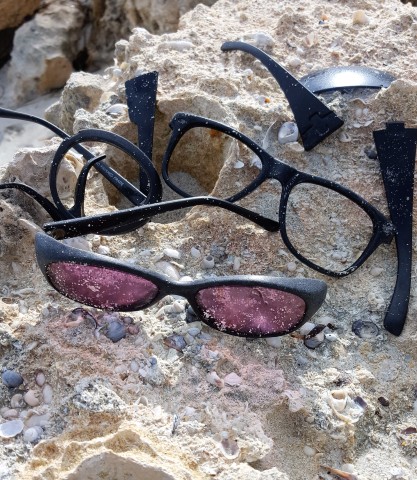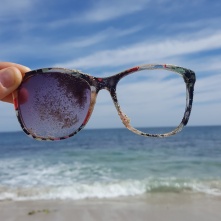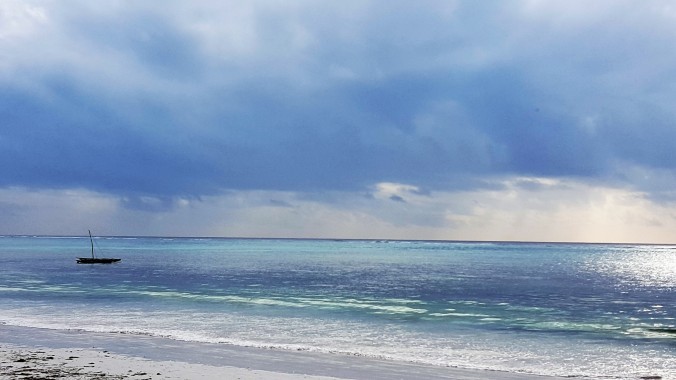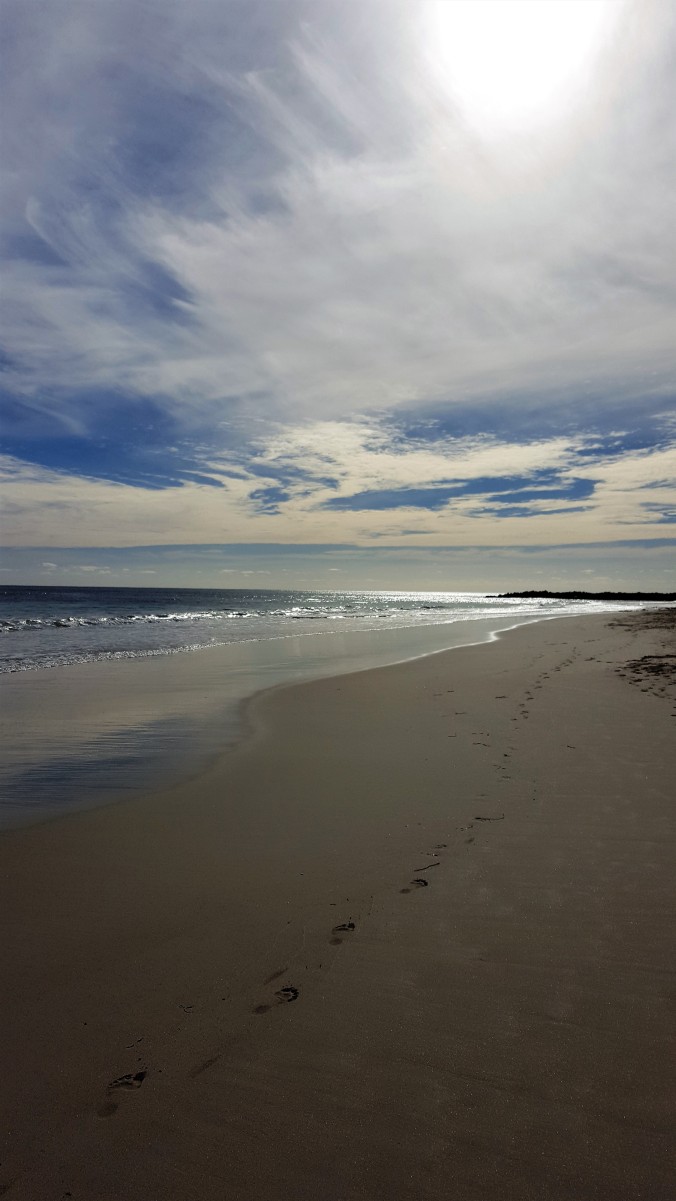I think I first became aware of this new ‘sport’ earlier this year. What a brilliant idea to combine jogging with tidying up our environment. In Sweden, plogging (the Swedish “plocka”, to pick up, and jogging) became a more organised activity a couple of years ago and more recently, with people’s greater awareness of the plastics problem around the world, so too has the movement spread to other countries.

‘Sunglasses’ collected during a one hour walk!
I already pick up plastics as I walk on the beach every day, albeit with more of a stoop than any ‘gym-like’ movement. I’m no longer a jogger and despite having enthusiastically decided I was going to get fit enough for a Park Run a few months ago, my few days of short runs resulted in my physio telling me running might not be what my body needed nowadays. But walking with a few squats and lunges would surely be okay.

Plastic bag, nylon rope and smaller ‘bits’ of plastic caught in the weed.
So a few weeks ago I started my new regime. On an empty windswept beach my dog sniffed around in the flotsam and jetsam while I slowed down our regular walking speed to fit in some strengthening exercises. Rather than being random, I decided to attribute different exercises to different pieces of plastic. A piece of nylon rope or string would be three squats, small fragments of plastic would be alternating lunges and other items such as sunglasses could be a slow stoop-like stretch of the hamstrings or a squat if the item was heavier, such as a lobster pot.
I’m not sure if this trend will take off in Western Australia. I have had a few bemused glances from other beach goers, few and far between in winter, and becoming more numerous now the temperature is warming up for summer. Perhaps if I could get some fellow dog-walkers to participate my antics might not seem quite so bizarre? After all, I’m not exactly plogging, it’s more a case of plolking – ‘plocka’ to pick up, and walking.





 Just harvested about 10kg of olives … now to cure them 😁
Just harvested about 10kg of olives … now to cure them 😁



You must be logged in to post a comment.